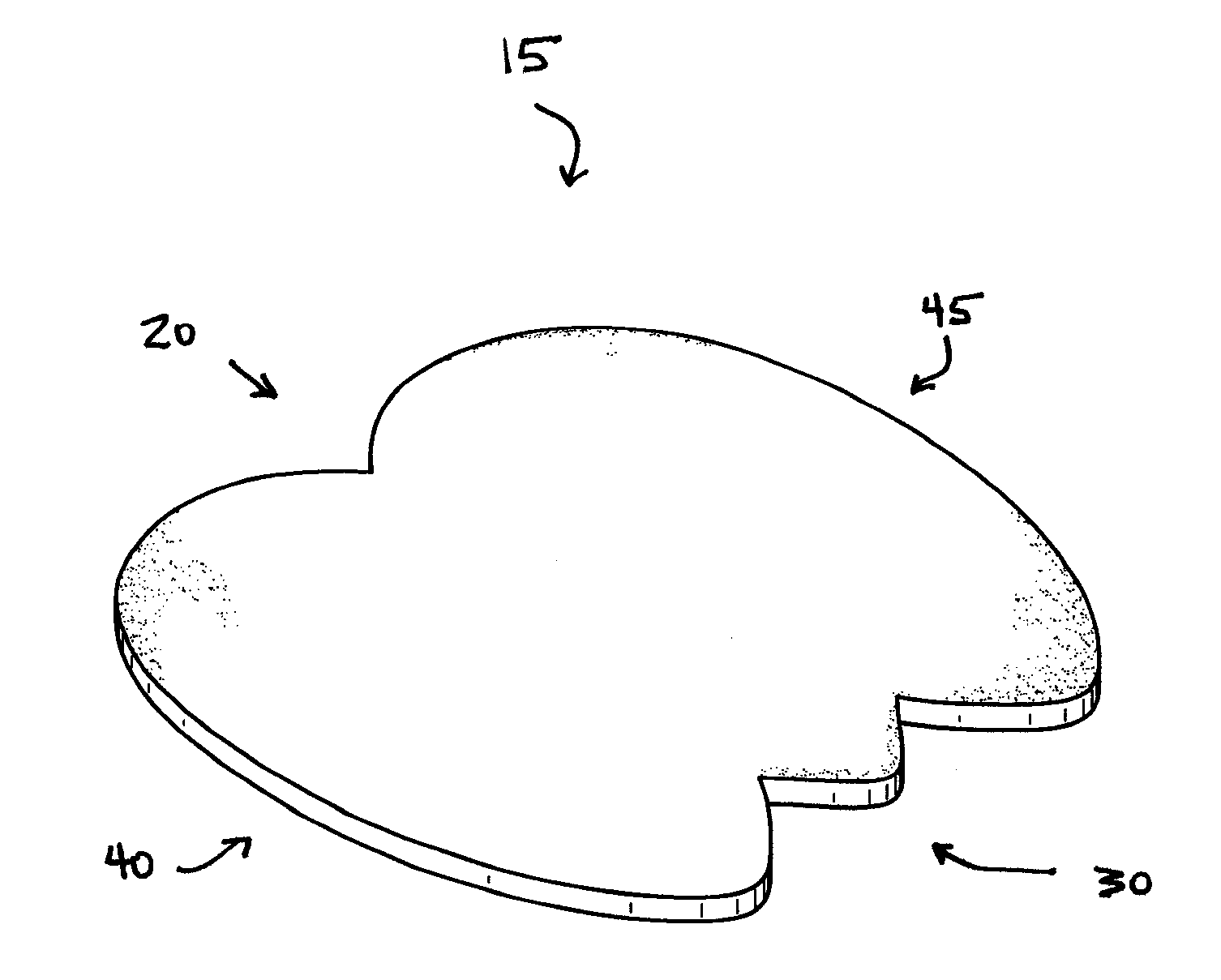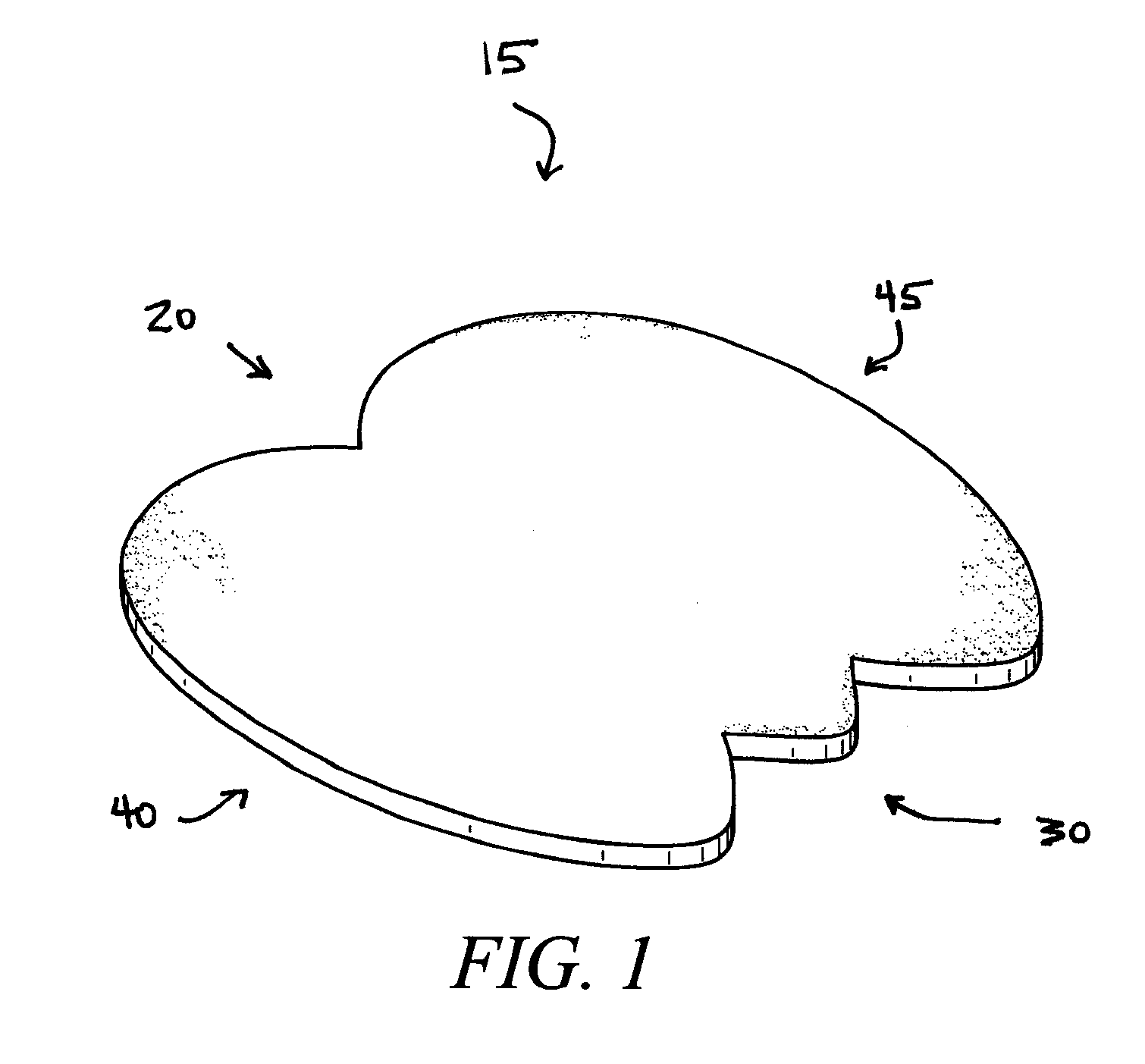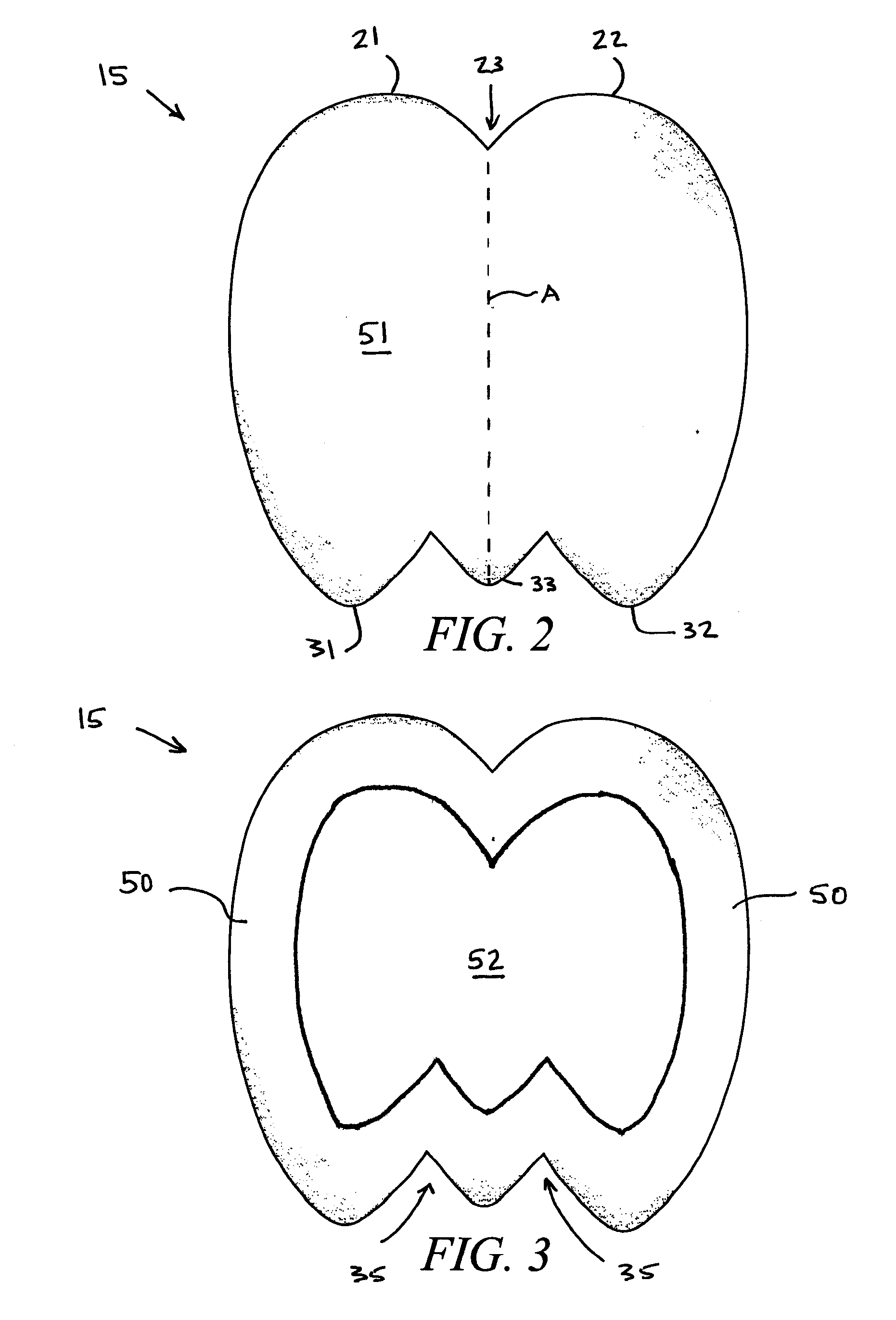Sacral wound dressing and method of use
a wound dressing and sacral wound technology, applied in the field of adhesive wound dressings, can solve the problems of reducing blood supply, forming open sores, breaking down the skin and forming open sores, and not adequately protecting sacral wounds from contaminants
- Summary
- Abstract
- Description
- Claims
- Application Information
AI Technical Summary
Benefits of technology
Problems solved by technology
Method used
Image
Examples
Embodiment Construction
[0016]The preferred embodiment of the present invention is shown in FIGS. 1-7, wherein the invention comprises a wound dressing 15 for protecting a sacral wound in the sacrococcygeal region 11 of a person 10. The preferred embodiment of the wound dressing 15 comprises a top end 20, a bottom end 30, opposing lateral ends 40, 45, an adhesive layer 50, a backing layer 51, an absorbent layer 52, and a removable protective layer 53.
[0017]The top end 20 preferably comprises 2 substantially arcuate lobes 21, 22 that connect at a midpoint 23 along the top end 20, wherein the midpoint 23 is preferably indented so that the top end 20 better conforms to the shape of the body region to secure the top end 20 against the skin and thereby prevent inadvertent detachment from the skin. The bottom end 30 preferably comprises 3 substantially V-shaped or U-shaped projections (referred to herein as “V-shaped” projections), wherein the V-shaped projections include 2 lateral projections 31, 32 and a media...
PUM
 Login to View More
Login to View More Abstract
Description
Claims
Application Information
 Login to View More
Login to View More - R&D
- Intellectual Property
- Life Sciences
- Materials
- Tech Scout
- Unparalleled Data Quality
- Higher Quality Content
- 60% Fewer Hallucinations
Browse by: Latest US Patents, China's latest patents, Technical Efficacy Thesaurus, Application Domain, Technology Topic, Popular Technical Reports.
© 2025 PatSnap. All rights reserved.Legal|Privacy policy|Modern Slavery Act Transparency Statement|Sitemap|About US| Contact US: help@patsnap.com



